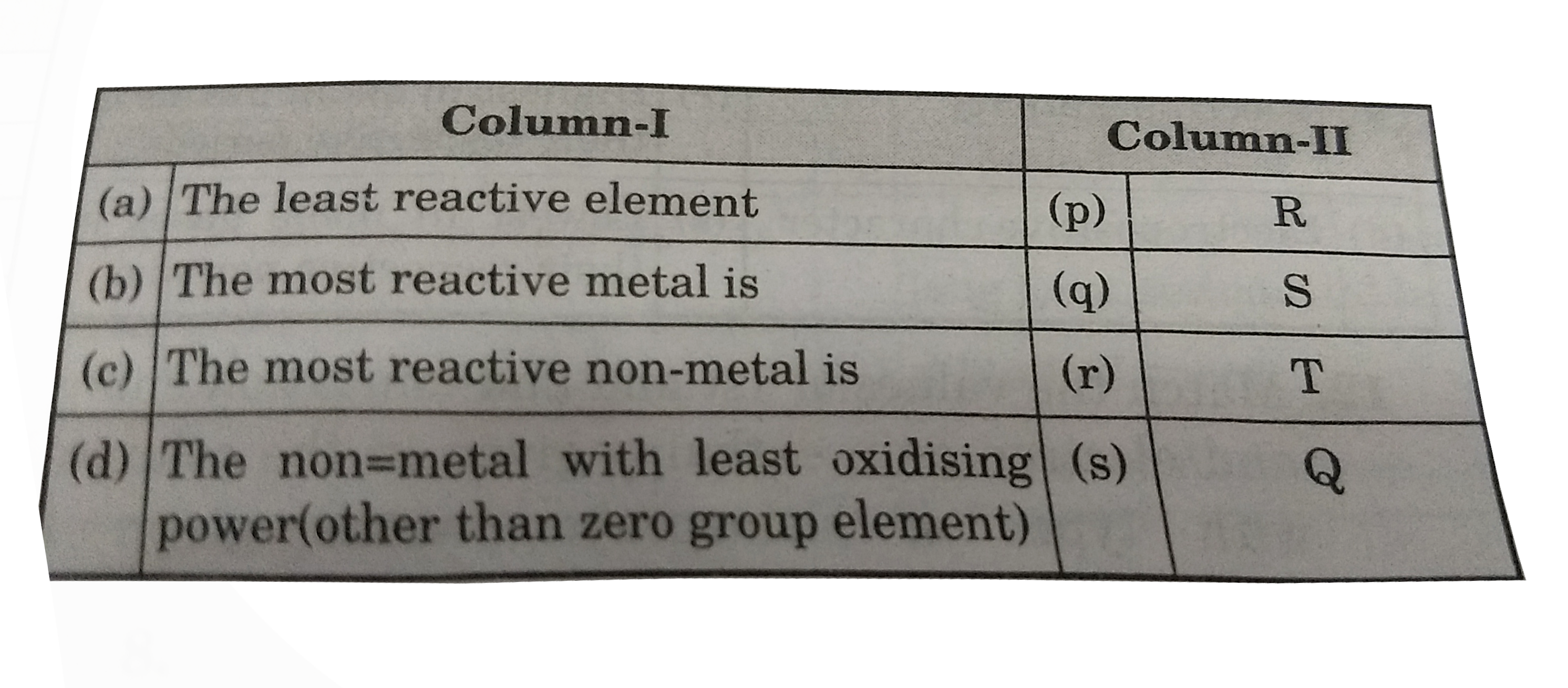Ionisation energy of F^Ɵ is 320kJmol−1 . The electron gain enthalpy of fluorine would beSolution in Malayalam
−320kJmol−1
−160kJmol−1
+320kJmol−1
+160kJmol−1
The correct Answer is:A
IE and EA of an element are equal in magnitude but opposite in sign.
∴IE=−EA
Topper's Solved these Questions
- CLASSIFICATION OF ELEMENTS AND PERIODICITY IN PROPERTIESBook:BRILLIANT PUBLICATIONChapter:CLASSIFICATION OF ELEMENTS AND PERIODICITY IN PROPERTIESExercise:QUESTIONS (LEVEL-II)
Explore 51 Videos
- CLASSIFICATION OF ELEMENTS AND PERIODICITY IN PROPERTIESBook:BRILLIANT PUBLICATIONChapter:CLASSIFICATION OF ELEMENTS AND PERIODICITY IN PROPERTIESExercise:QUESTIONS (LEVEL-III (Single Correct Answer Type ))
Explore 8 Videos
- CLASSIFICATION OF ELEMENTS AND PERIODICITY IN PROPERTIESBook:BRILLIANT PUBLICATIONChapter:CLASSIFICATION OF ELEMENTS AND PERIODICITY IN PROPERTIESExercise:QUESTIONS
Explore 11 Videos
- CHEMICAL THERMODYNAMICS Book:BRILLIANT PUBLICATIONChapter:CHEMICAL THERMODYNAMICS Exercise:LEVEL-III
Explore 52 Videos
- ENVIRONMENTAL CHEMISTRYBook:BRILLIANT PUBLICATIONChapter:ENVIRONMENTAL CHEMISTRYExercise:QUESTIONS LEVEL-II (ASSERTION-REASON TYPE)
Explore 10 Videos
Similar Questions
The statement that is not correct for the periodic classification of elements is
View SolutionFirst and second ionisation energies of magnesium are 7.646 and 15.035 eV respectively. The amount of energy in kJ needed to convert all the atoms of magnesium into Mg2+ ions present in 12 mg of magnesium vapours is: 1.1, 1.5, 2, 0.5
View SolutionFind the blocks to which elements having atomic numbers 34, 37, 42 , 63 belong.
View Solution1.0 mole of a monoatomic ideal gas is expanded from state (1) to state (2) as shown in the figure. Calculate ti work done for the expansion of gas from state (1) to state (2) at 298 K

View SolutionAssertion : Earth's outer mineral cover refers to lithosphere.
Reason : Troposphere extends to about 10 km above earth's surface.
View SolutionIonisation of energy F^(ɵ) is 320 kJ mol^(-1) . The electronic gain enthalpy of fluorine would be
View SolutionThe first (ΔH1) and second (ΔH2) ionisation enthalpies (in kJmol−1) and the (ΔHeg) electron gain enthalpy (in kJmol−1) of a elements are given below:

Based on the above information match the following columns.

View SolutionIonisation energy of F^(-) is +320 mol^(-1) . The electron gain enthalpy of fluorine atom would be
View SolutionIf the electron gain enthalpy of S and Se are -200 KJ " mol"^(-1) and -195 KJ " mol"^(-1) respectively. Wha is the electron gain enthalpy of O atom?
View SolutionThe electron gain enthalpy ( in kJ//mol ) of fluorine, chlorine, bromine and iodine, respectively ,are :
View SolutionThe second electron gain enthalpies (in kJ mol−1) of oxygen and sulphur respectively are:
View SolutionThe formation of O2−(g) startng from O(g) is endothermic by 603kJmol−1. If electron gain enthalpy of O(g) is −141kJmol−1, the second electron gain enthalpy of oxygen would be :
View SolutionThe electron gain enthalpy in kj/mol of F, CI, Br, and I respectively are :
View SolutionIonisation of energy of F− is 320kJmol−1 . The electron gain enthalpy of fluorine would be
View SolutionThe ionisation enthalpy of sulphur is 1014kJmol−1. If its electronegativity is 2.4, what is its electron gain enthalpy?
View SolutionThe electron gain enthalpy ( in kJ//mol ) of fluorine, chlorine, bromine and iodine, respectively ,are :
View Solution

